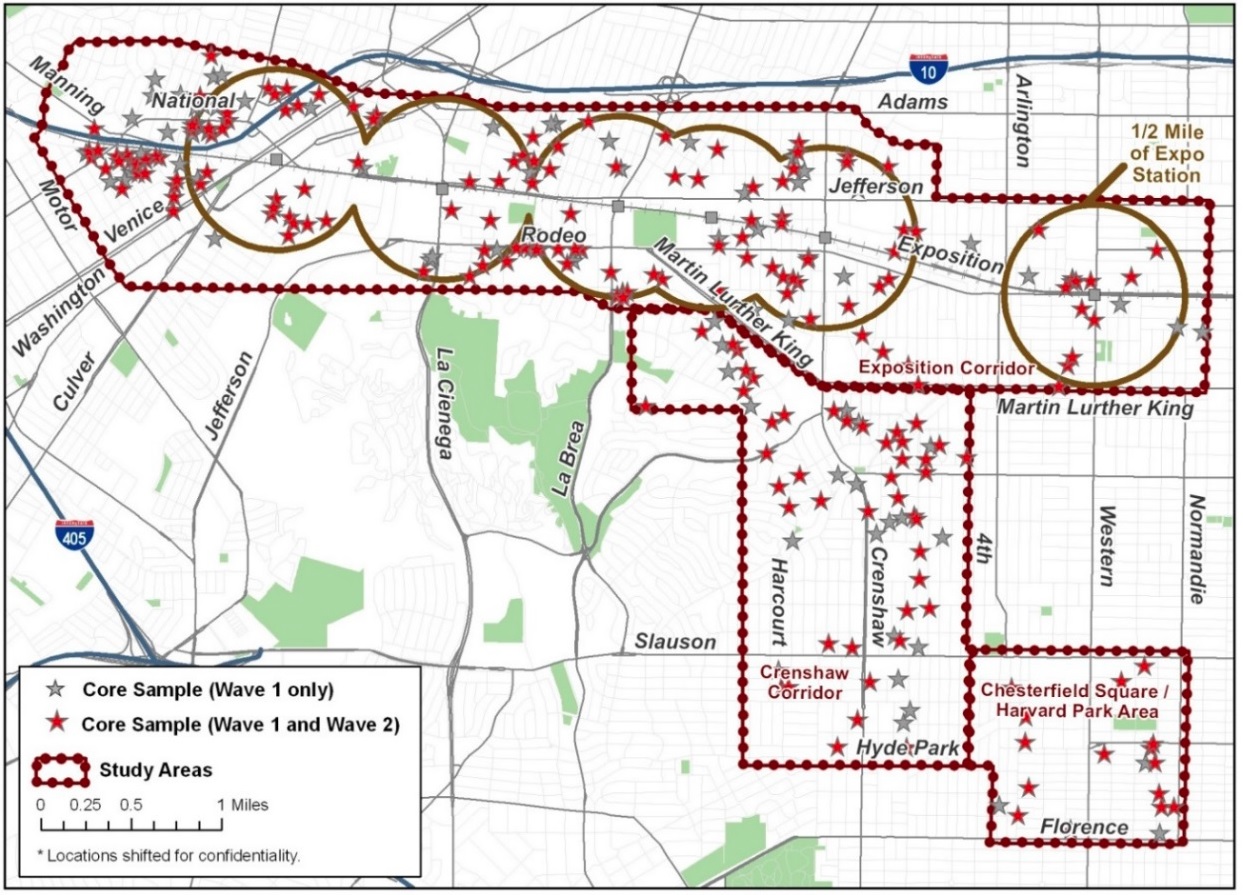UNIVERSITY OF SOUTHERN CALIFORNIA PRICE SCHOOL OF PUBLIC POLICY
Executive Summary
Background
Los Angeles, the world’s prototypical automobile city, is transforming into a multi-modal metropolis. The six rail transit lines projected to open between 2012 and 2020 will make the Los Angeles Metro Rail system longer than the present day Metro in Washington D.C. At the same time, ambitious state regulations require that metropolitan planning organizations demonstrate how their transportation plans meet greenhouse gas emissions (GHG) reduction targets. There is a pressing need to evaluate the impact of new transportation investments comprehensively. Yet, transportation, as a field, has rarely systematically evaluated the impact of major projects using an experimental – control group design. To help close that gap, we conducted the first-‐ever experimental – control group, before – after study of the impact of a major transportation investment in California.
As transportation becomes more varied – with localities experimenting with programs that include real-time parking pricing, toll lanes, neighborhood vehicles, and bicycle plans – it will be increasingly important to evaluate the impact of these projects in a consistent and credible way. Social scientists have applied the methods of experimental research designs for decades, but such techniques have only recently made inroads in transportation.
Study Design
We conducted a detailed study of travel behavior changes around new Expo Line light rail stations, using experimental methods. The Exposition (Expo) Line is a light rail line in the Los Angeles metropolitan area that extends south and west from downtown Los Angeles. Phase I of the line, which opened in two stages in April and June 2012, runs 8.7 miles from downtown Los Angeles westward to Culver City, near the junction of the 405 and 10 Freeways. The six western-most stations along the Expo Line (Phase I) comprise the experimental neighborhoods, and similar control group neighborhoods were chosen nearby. This research project enrolled experimental households, within ½ mile of a new Expo Line station, and control households, living beyond ½ mile from the station. In fall of2011, those households were asked to track their travel for seven days, recording daily odometer readings for all household vehicles and logging trips by travel mode and day for each household member 12 years or older. In approximately half of the households, an adult also carried a geographic positioning device (GPS) and an accelerometer, to measure travel (via the GPS device’s location tracking function) and physical activity. The same households were invited to complete
the seven day travel study again in fall, 2012, after the Expo Line opened. In total, 204 households (103 in the experimental neighborhoods, 101 in control neighborhoods) completed the travel tracking before and after the Expo Line opened.
Read full report (PDF) here: The Exposition Light Rail Line Study
About The USC Sol Price School of Public Policy
priceschool.usc.edu
“The mission of the USC Sol Price School of Public Policy is to improve the quality of life for people and their communities, here and abroad. We achieve this mission through education and research that promote innovative solutions to the most critical issues facing society.”
Tags: Haynes Foundation, Los Angeles, Price School, Sol Price, The Exposition Light Rail Line Study, USC







 RSS Feed
RSS Feed